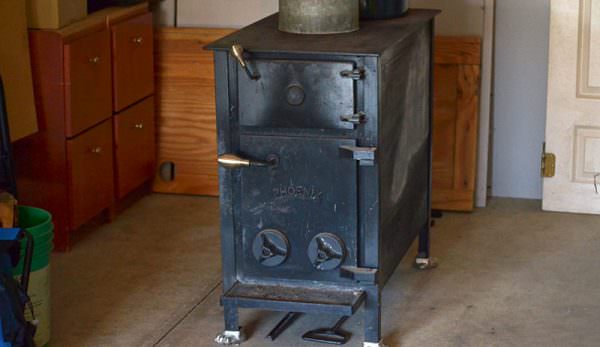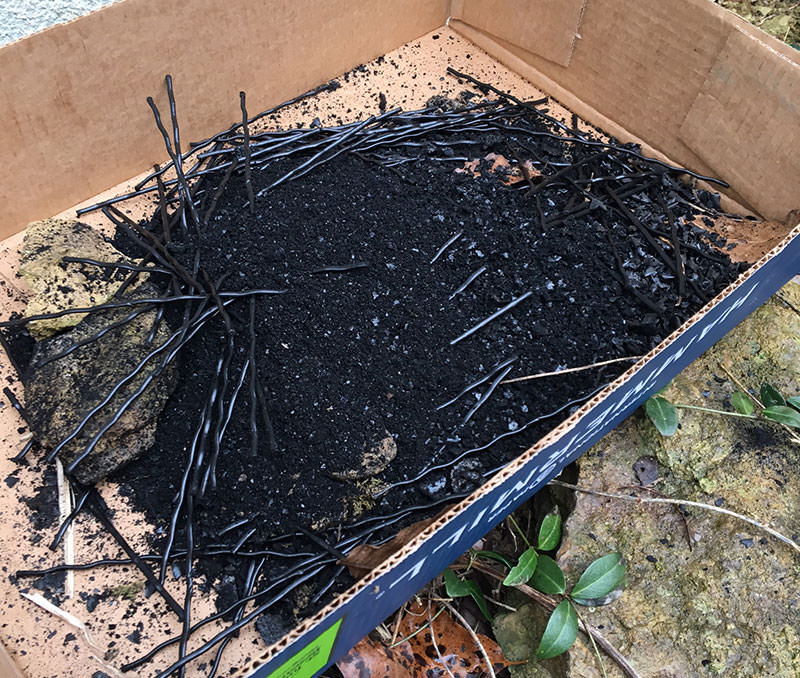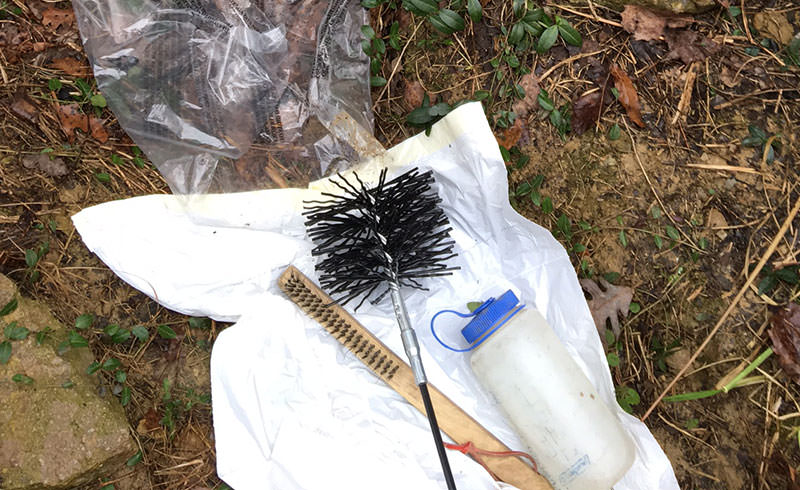
Growing up in the city, I was pretty connected to the grid. I must admit that I’ve taken for granted the uninterrupted transmission of electricity to my home over the years. Now, being in the country, I’m a little more aware of our energy usage.
We’re fortunate that our farmhouse is equipped with a geothermal heating-and-cooling system and is made of highly insulative structural insulated panels (SIP), which exponentially decreases our energy usage. The people who built our home also created a south-facing solar room with a black stone floor to absorb the sun’s heat, which on a sunny day, will warm the house a couple of degrees just on its own. However, of our new energy (or energy-saving) sources, the one that fascinates me the most is the wood stove.
In the suburban neighborhoods where I’ve lived most of my life, a wood stove just wasn’t something we had—it’s not something I’d even thought about having until we moved to our farm. With our new home equipped with a stove pipe and the generosity of neighbors who have loaned us an old stove, we’re on our way to discovering if this is a good energy source for us. And it is, indeed, a discovery process.
Creosote Cleanout

One of our biggest wood stove concerns to date has been getting the chimney cleaned out. Quite a bit of creosote was built up in the pipes, and when we learned that all the chimney sweeps in our area were booked until spring, we realized this would be a DIY job. Depending on the level of buildup, creosote can be a fire hazard, as well as affect the air quality in the house. Given that our house is practically air-tight due to the SIP panels, this was a huge concern for us. Mr. B has made it his personal mission to get the stove in burn-ready shape.
After the first use of our wood stove, we noticed a strong, chemical smell long after the embers had died down and ashes had been removed from the stove. Upon further cleaning inside the stove with a metal brush and a Shop-Vac, as well as removing and cleaning out interior chimney pipes, the smell still permeated. Due to our extremely tight home, the air exchange with the outside is minimal, making us more than a little worried what may be seeping into our home.
Fixing Faulty Chimney Pipes
We later learned about something termed the stack effect, which, in the winter, basically means that warmer, less dense air rises and seeks to escape through any place it can, while cooler, more dense air comes in from the outside to fill its place. The taller the home and the greater the temperature difference between inside and out, the greater the stack effect. In our extremely tight home we believe one of the places the air is most likely to enter is through the chimney pipes. It is obvious, even to our eyes, that the interior chimney pipes don’t fit together perfectly, allowing creosote and outside air to leak into our house when a fire isn’t burning. To combat this, Mr. B unscrewed the cap from the bottom of the chimney pipes outside and stuffed some plastic bags in the inside pipe to block the air moving from outside to inside. That worked great for a short term fix, and the creosote smell went away.

After sweeping the chimney, Mr. B put the metal cap back on, and the bad smell didn’t return. We had the stove ready again just in time for single digit temps, and we lit it up. This time we used a stove thermometer to better monitor proper burn temperature, to avoid the creosote buildup that occurs at low temperature burns, and to avoid inefficient and even potentially dangerous over-firing, where burn temperatures reach dangerous highs. Mr. B also ordered some high temperature tape rated to 600 degrees F to seal some of the obvious gaps between the pipe connections until we decide if we need to fix or replace the pipes. So far the stove pipe thermometer has not exceeded 400 deg F, so we believe this will work well. We’ll find out if the creosote smell will return after we employ the tape.
Adequate Ventilation
Burning wood in a wood stove pulls in oxygen from the air in the home to keep the fire lit. Typically, this isn’t a problem because most homes breath—air finds its way in through gaps in windows or walls and replaces what is lost to the burn. But because our home is so tight, we’re learning that we need to keep a window open in the room where the wood stove is located. We believe that if we don’t, it will cause momentary backdrafts through our chimney, blowing smoke and other particles into our home, creating an air-quality issue. Without sufficient oxygen, the wood won’t burn as hot as desired, eventually dying out and creating creosote in the process.
Chopping Wood
When we first moved to the farm, I had visions of juicy red tomatoes and crisp orange carrots growing in the garden. I didn’t consider that the first thing we’d be harvesting on the farm is wood. Fortunately, we have plenty of it. We have enough fallen and scrub trees to last us a lifetime, so we got our chainsaw a splitting maul friend, and now we’re set for collecting burn materials. Mr. B has loved the physical outlet chopping wood has provided. (I’ve yet built up the confidence needed to wield sharp objects.)
Heat Distribution
One of our big obstacles in using the wood stove as a proper heat source is evenly distributing the heat throughout the house. You see, the wood stove is in the basement of a very tall house, meaning the downstairs will be really hot while you’ll think you’re growing icicles in your nose hairs when hanging out in the top-floor loft. Mr. B is devising a plan to make the use of the stove more efficient, but we’d welcome your thoughts in this area, as well.
Heat Backup
Right now, the wood stove is a novelty to us, but of course, all of our work to get it running is for the day when we really need it. A few years back, an ice storm whipped through our area, cutting off the power for as much as 12 days for some people. Last thing we want is to become human ice cubes in our first year as farmers, so we’re getting things ready now in preparation for the worst.




